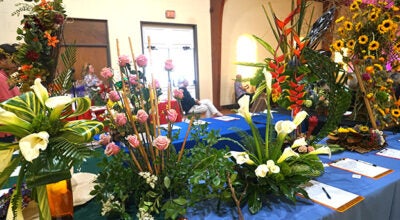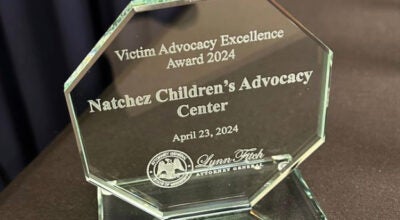Residents hear code issues, plans
Published 12:10 am Thursday, February 21, 2013
NATCHEZ — The city’s development needs a lot of work and a lot of public input.
That is the message the city’s code consultants Phil Walker and Lee Jones told approximately 25 residents who gathered in the Natchez City Council Chambers Wednesday to hear what they can expect from the city’s current development code update process.
Walker, a former Natchez city planner and owner of the Walker Collaborative in Nashville, Tenn., explained to residents why the development code is important and areas in which the city’s code could improve.
The code, Walker said, shaped the form and character of Natchez. It impacts, he said, the community’s quality of life, economic development and the natural health of the environment. The code also impacts real estate development, which Walker said in turn impacts the financial condition of local governments through taxes.
The code outlines land uses by zoned districts, development sizes, street guidelines, landscaping, utilities, parking and signage.
Initial problems Walker said he and Jones see with the development code include the lack of cohesiveness and organization. It also lacks, he said, graphics that illustrate parts of the code and make it more “user-friendly.”
The development code also does not mention the Natchez Preservation Commission under bodies that review and approve applications pertaining to the code. The preservation commission is noted in the city’s historic preservation code.
“I think a big improvement would be to integrate those ordinances into the development code,” he said.
Over the past two days, Walker and Jones have met with a steering committee, comprised of local developers, builders, realtors, preservationists and designers, as well as city officials and staff.
One of the problems that was brought up during the meetings is that it is hard to find an apartment in Natchez.
“Even though it’s illegal, it’s great to see that some of the buildings downtown have converted their upper story into housing,” Jones said.
Other problems included an outdated comprehensive plan for the city. The current plan, Walker said, was drafted in 1999 and does not serve as a good guide for updating the code.
Other problems include a lot of single-use districts in the code. For example, Walker said, the B-3 downtown business district does not allow housing.
“Obviously you have housing in the district, but in the code it does not allow it,” he said.
A better planning practice for the city, Jones said, would be to have districts with multiple uses. The current code includes eight residential, four commercial, one industrial and two waterfront development districts. The code also allowed for planned unit developments and special use districts.
The guidelines for the city’s corridors — John R. Junkin Drive, Seargent S. Prentiss Drive, Liberty Road, D’Evereux Drive and Martin Luther King Jr. Street — could also use improvement, Walker said.
The standards for the highway commercial areas, Jones said, could be revised to achieve complete streets, which could include bike lanes, sidewalks and landscaping.
Creating multiple uses for those and other districts would, Jones said, avoid the suburban sprawl community layout in which the community is separated by too many expansive areas of the same zoning category.
The goal, Jones said, would be for the code to reflect smart growth, a planning theory that encourages an integrated, walkable community with mixed-use development.
Downtown Natchez is a good example of smart growth planning, Walker said.
All current development, Walker said, would be grandfathered into the updated code under the current code, so changing the look and usability of parts of the city will not happen overnight.
“It may take 50 years from when you adopt your code,” he said. “But over time, these areas can redevelop.”
Smart growth planning is particularly important for Natchez, Walker said, because of its draw of heritage tourists.
“They have a certain visual in their head, and when they get from point A to point B, and they’re seeing franchise architecture that they can’t see anywhere else, that’s why we think your commercial corridors are really important in Natchez,” he said.
Jones and Lee also fielded questions and concerns from residents at the meeting regarding incorporating an ordinance to protect the Forks of the Road site, signage and public participation in the code update process.
Walker said he and Jones intend for the code update process to be completely transparent.
“That’s why we wanted to meet with the public on our first trip here,” he said. “We wanted to say, ‘Here’s who we are, and this is what we’re doing.’”
Jones also suggested that an e-mail list be created so residents could sign up and be notified of public meetings about the code.
Walker and Jones said they should have a draft copy of the code available for public review on a website when the first draft is finished. Meetings will also be held for public feedback on the draft code before a final code is presented.
Walker and Jones will present a report of their findings of their first trip to Natchez and return again in approximately one month.





